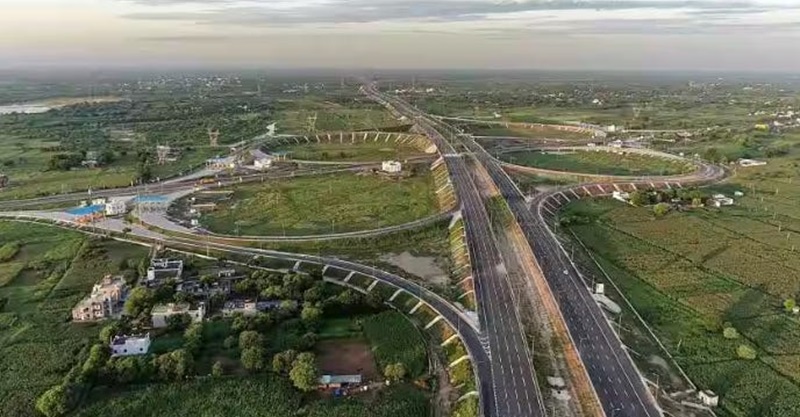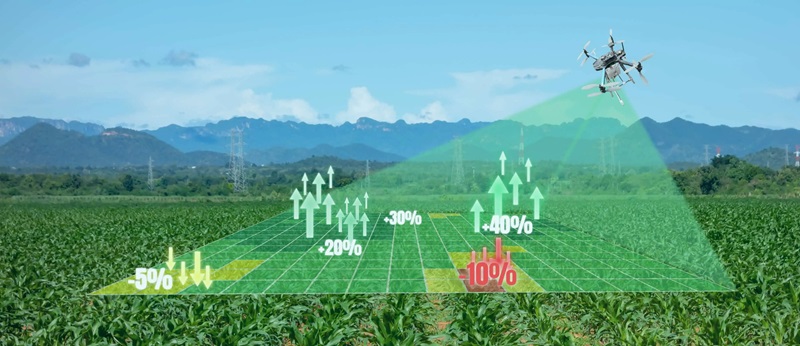RPA: A New Frontier Of Automation For The Agriculture Industry

As we look ahead to 2050, it's evident that feeding a projected population of 9.1 billion will require a 70% increase in food production (a report from the Food and Agriculture Organization of the United Nations.)
With the agriculture industry already grappling with intense competition, scarce resources, soaring material and transportation expenses, and ecological shifts, farmers are under immense pressure to deliver even higher yields from their fields and orchards in the most cost-effective manner possible.
Intelligent automation can play a critical role in meeting these challenges head-on. Robotic Process Automation (RPA) is one such example of a game-changing technology that can transform the way farmers operate.
Understanding The Value Of Data In Agriculture
For farmers, success hinges on having access to vital information. This information can include anything from weather patterns and labor availability to market trends and political climate. Obtaining this information from various sources can be a challenge. Other sources of information can include media outlets, private industry, and government sources, with data being presented in various formats like text, document, video, satellite imagery, email, and even raw data. The process of manually collecting and analysing this information can be time-consuming, error-prone, and make it difficult to gain an overall perspective. With the added burden of farming responsibilities,it's imperative that farmers find a way to streamline this process.
The Need For Intelligent Automation
As the global population approaches 9.1 billion by 2050, the agriculture industry faces mounting challenges in producing enough food to feed everyone. Farmers, in particular, are dealing with various issues such as competition, diminishing resources, rising costs, and environmental changes.
To address these challenges, the agriculture industry is turning to intelligent automation. The global spending on advanced agricultural technologies and systems that are connected and make use of AI and ML is expected to significantly increase in revenue by 2025, reaching $15.3 billion. This projection emphasises the importance of investing in intelligent automation and indicates a growing demand for advanced technology solutions in agriculture, which presents opportunities for innovation and growth.
Intelligent automation has become an attractive option for farmers and agribusinesses looking for solutions to automate their data-intensive nature of work. RPA can assist with forecasting outcomes, planning, and analysing pricing, as well as improving accounting methods, enabling farmers and agribusinesses to focus on more high-value tasks
Bringing RPA Technology In Agriculture
RPA, an intelligent robotic process automation, is the solution to the information-related challenges faced by farmers. Bots are used for analysing various data sources to provide farmers with insights for precision farming, crop health, supply chain management, fair pricing, and workforce management. Farmers can streamline and optimise tasks with the right tools.
In agribusinesses, automation is critical but often underutilised. Intelligent bots can be used streamline crucial processes for consistency, accuracy, and efficiency. From compliance forms to customer tracking, bots handle tasks effortlessly, freeing up time for high-value tasks
RPA in Agricutlure: Use Cases
As the global population surges towards 10 billion by 2050, the agricultural industry must confront the monumental task of feeding an ever-increasing number of people. The current methods of food production are neither sustainable nor efficient, resulting in an alarming 70% of freshwater usage and 24% of greenhouse gas emissions. The scale of agricultural efforts must increase to meet the growing food demand, but the industry's current environmental shortcomings will only intensify unless there is a concerted effort to address them. RPA can transform traditional farming practices and create a more data-driven, sustainable, and efficient approach to agriculture.
Bots For Manure Addition RPA bots can optimise manure application for crops by sending timely alerts and prescribing the exact amount and type of manure needed based on crop and soil data. This eliminates guesswork and ensures optimal crop growth while preventing potential harm to crops.
IoT Sensors In The Soil Using soil sensors, RPA bots can provide farmers with tailored insights to optimize their land preparation. By extracting, structuring, and analyzing data, bots generate reports at regular intervals that inform farmers about their soil's nutrient levels and specific needs. This data-driven approach enables farmers to prepare their soil more effectively and nurture healthier crops.
Bots For Irrigation From a technical perspective, RPA bots can automate irrigation schedules based on moisture levels and precipitation rates to conserve water and improve crop health. The use of smart irrigation technology enables farmers to reduce water usage and save up to 20% compared to traditional methods. RPA bots can also collect and analyze data from soil sensors to prepare the land for irrigation according to its specific needs. With automation, farmlands can optimise their irrigation processes and maximize their water resources.
Bots For Harvesting Effective harvesting is not a one-size-fits-all approach. Different crops require different harvesting timings, and some should be picked just before they are consumed. IoT sensors and RPA bots enable precise crop harvesting. By analyzing data on crop weight, sunlight, and other variables, bots can determine the ideal timing for harvesting. This helps prevent crop waste, maintain quality, and optimize logistics. OCR (Optical Character Recognition) and NLP (Natural Language Processing) technology are used to analyse the data and automatically schedule harvests.
RPA For Crop Yield RPA, ML, deep learning, and neural networks can accurately predict crop yield by combining innovative technologies. With data extracted from multiple sources, such as agriculture APIs and IoT sensors, RPA bots input information into ML algorithms. This allows for accurate yield predictions with minimal human intervention. Using advanced technology ensures greater accuracy and a wide range of variables can be fed into the model. However, predicting crop yield requires a sophisticated model that relies on RPA, ML, deep learning, and neural networks.
Feeding The Future
Food and agriculture fields need attention now. To take their business to a level where it is profitable and productive, it is important for them to look to RPA as a viable solution. This is not an option anylonger, which means that agribusinesses, even with no prior experience with RPA, should take advantage of the innumerable capabilities that this intelligent autonation offers. Even automating a few processes in the agricultural sector will drastically change the challenges farmers face. Educating the agricultural sector about automation benefits is crucial to accelerate adoption and ensure that they benefit from high-level strategies and control, thus maximising profitability and minimising losses.








